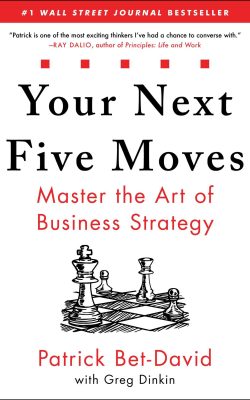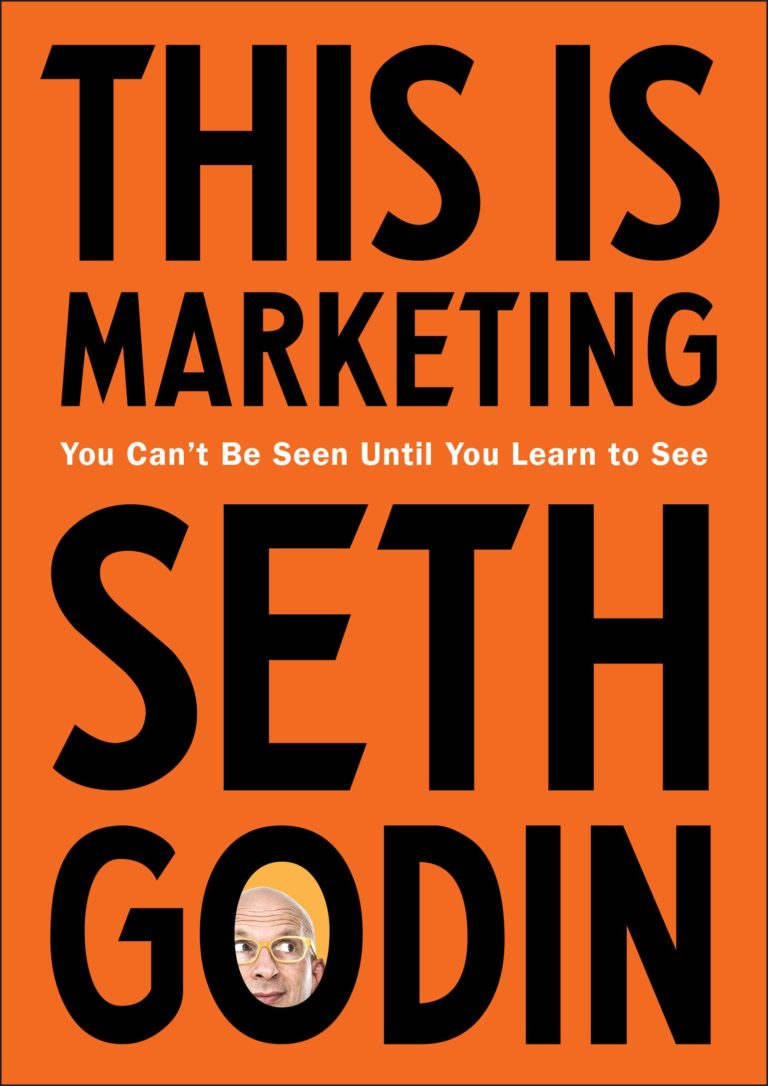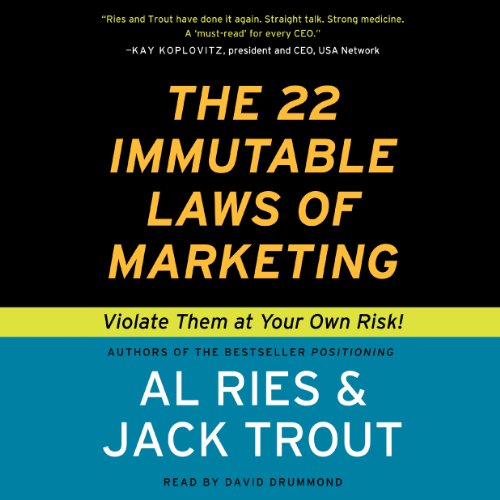A detailed summary of a business strategy book with your next 5 moves. Written by the creator of one of the leading YouTube channels for Entrepreneurs.


Book Table of Contents
Opening Credits (00:00:29)
Introduction: Before Your First Move (00:21:05)
Move 1: Master Knowing Yourself (00:00:05)
Chapter 1: Who Do You Want to Be? (00:32:27)
Chapter 2: Study the Most Important Product: You (00:26:56)
Chapter 3: Your Path to Creating Wealth: Intrapreneur or Entrepreneur? (00:29:39)
Move 2: Master the Ability to Reason (00:00:04)
Chapter 4: The Incredible Power of Processing Issues (00:27:53)
Chapter 5: How to Solve for ‘X’: A Methodology for Effective Decision Making (00:26:21)
Move 3: Master Building the Right Team (00:00:04)
Chapter 6: The Myth of the Solopreneur: How to Build Your Team (00:38:42)
Chapter 7: Create a Principles-Based Culture (00:30:40)
Chapter 8: Trust = Speed: The Power of Reliability (00:34:00)
Move 4: Master Strategy to Scale (00:00:05)
Chapter 9: Scaling for Exponential Growth (00:32:50)
Chapter 10: Make Momentum Your Friend – and Be Prepared for Chaos (00:30:47)
Chapter 11: Moneyball: Designing Systems to Track Your Business (00:28:49)
Chapter 12: Stay Paranoid; the Grand Master Never Lets His Guard Down (00:27:38)
Move 5: Master Power Plays (00:00:04)
Chapter 13: How to Beat Goliath and Control the Narrative (00:33:44)
Chapter 14: Study Mobsters: How to Sell, Negotiate, and Influence (00:29:36)
Chapter 15: Cultivate Your Power, and Stay Battle Tested (00:24:38)
Conclusion: Checkmate (00:08:39)
End Credits (00:01:11)
Book attributes
Author
Patrick Bet-David is the creator of the Valuetainment channel for entrepreneurs which as of the day of writing has almost 3 million subscribers and 1500 videos. Patrick is also the CEO of PHP Agency, Inc. A financial services company with over 12,000 agents in 49 states and Puerto Rico.
Length
Hardcover/Audio: 320 Pages/8h 6m
Subject
Business and Marketing
Reviews
1780 Reviews on Amazon as for the moment of writing (wow…) 90% of which are 5 stars
Price Comparison - 17/02/21
Achievements
1.#1 Wall street journal bestseller.
2.An international bestseller.
Introduction: Before Your First Move
This book is about making strategic decisions, not letting your ego take hold of you, just like in chess. All greats possess this strategic vision of planning ahead. That’s why Patrick split the book into your next 5 moves through which to succeed in business. The moves should be completed in their specific order, no skipping.
Move 1: Master Knowing Yourself

Chapter 1: Who do you want to be?
Just like Stephen Covey mentions in Habit No.2: Begin With The End in Mind in his book 7 Habits of Highly Effective People, we should not start our engine before we know where we want to go, we need a reason to wake up every day, and guiding principles when faced with ambiguity.
One incredible way to help you create a vivid image of the person you want to become is to read biographies of Models and Mentors, dead or alive who have achieved what you want to achieve, and then imitate them, For example: Aspiring investors could read about Warren Buffet and Aspiring Entrepreneurs about Elon Musk etc.
The third reason IBM has been so successful was that once I had a picture of how IBM would look when the dream was in place and how such a company would have to act, I then realized that, unless we began to act that way from the very beginning, we would never get there.
Chapter 2: Study The Most Important Product - You.
Knowing yourself is one of the most difficult things out there to accomplish, but if you can improve at that, the clarity will be worth it because it has a much propelling effect.
Here’s another resource for knowing yourself by Patrick:
You may complete this Personal Identity Audit (Click Quiz on top of the website)according to Patrick, the more emotional you get while answering, the more chance that it will keep moving you long after you took it.
It appears that what drives me is Individuality according to this test ( big surprise :D)
What about you guys? I’d love to hear your result at the comments below the post.
There are three things extremely hard: steel, a diamond, and to know one's self.
Chapter 3: Your Path to Creating Wealth: Intrapreneur or Entrepreneur?
Entrepreneur - Highest Risk, Highest Return
Being an entrepreneur is the highest risk and highest reward, but it might not be for everyone, always remember the adversity and risk each of the entrepreneurs takes, not just the glamorous moments.
What is an Intrapreneur?
Patrick mentions that an alternative to being an entrepreneur is being an Intrapreneur – High Level Executive or get a compensation package in accordance with performance, not just for showing up. This means you’ll still act like an entrepreneur and have the responsibility of an entrepreneur, but you’ll have to be able to accept authority, because after all, the entrepreneur is the one who took the risk.
81 Billion Reasons to Become an Intrapreneur
Keep in mind that some Executives are extremely rich. One of those is Steve Ballmer who became the CEO of Microsoft in 2000 and as of today (07.02.21) has a net worth of 81 Billion Benjamins according to forbes.
Before You Jump on the Opportunity Consider That:
This might be a good option, but the company has to be suited to promote intrapreneurs, it has to have the right incentive system for intrapreneurs to stay, if they refuse to give you rewards according to performance, you shouldn’t stay there according to Patrick.
Move 2: Master the Ability to Reason

Chapter 4: The Incredible Power of Processing Issues
Start with Responsibility
ITR: Investment Time Return (When you have income)
Another tip that stood out for me in this chapter was to analyze things according to the technique of ITR: Investment Time Return.
Though a caveat here is that it might be pretty difficult to use without an income, but still possible.
ITR means that every change should be considered in comparison with it’s alternative by placing Time and Money values on each option.
ITR Example: Hiring an Employee
Let’s say you want to hire an employee.
What tasks will he perform?
How much money will it cost you to hire him?
How much of your time will it save?
How much is your time currently worth (calculate per profitable task completed) and does it turn out to be cheaper to hire the employee?
If it does, hire them, and that’s how you build leverage.
Let me know if this framework is helpful, because I’ve been thinking whether it’s relevant to mention.
Chapter 5: How to Solve for 'X': A Methodology for Effective Decision Making. (Return Later)
Look for what actually bothers you in a situation – Your ‘X’, like in an algebra equation. Don’t just say “I hate Mondays” but look for the specific thing at Mondays that bothers you and then solving it becomes a lot easier.
Solve for 'X' Formula.
Here’s the formula that Patrick offers and also uses himself for processing his business issues.
Solve for 'X' + ITR = Time, Money and Effort saved.
When Patrick combined this formula with adding a Time and Money value to his alternatives, he was able to save millions of dollars in the long term, on what just seemed to be a losing decision initially. (Something that seemed a loss on the surface level turned out to be gain after deeper analysis)
Move 3: Master Building the Right Team

No matter how brilliant your mind or strategy if you're playing the solo game you'll always lose out to a team
Eventually if we want to play big we’ll need to have a team, there’s just a limit to the amount of time and knowledge that one person could have… Therefor, this move discusses building and running a team.
Chapter 6: The Myth of the Solopreneur: How to Build Your Team
Have a Reputation of Enriching Your Employees Lives
In order to attract high performing employees you need them to know they will promote themselves by the association with you, it could be by the example you set, your coaching, knowledge, contacts, tough love(holding them to high standards).
First seek to Improve their lives, and along the way you will get your return.
Ask yourself: What benefit do they get by the association with me?
It's a Continuous Effort
After you have hired them always keep investing in the “benefits program” and in them, because If you don’t, they’ll eventually leave to the competitors.
Chapter 7: Create a Principles-Based Culture
What are the Benefits of a Principle-Based Culture?
To reach the best potential, you and your team need to have the same, religion-like principles. People desire the feeling of clarity and it gives them purpose to wake up in the morning and drives them forward. Decide what your guiding principles are, why do you wake up each morning, and what values do you represent.
Repeat the Principles Until They Mock You
After you’ve established the principles repeat them very often, as Patrick says: Unless your employees are mocking you, you’re probably not repeating them enough.
Give Your Principles Meaning
Enforce Your Principles
When the principles sit well in their mind, make sure you enforce them with no compromises, if someone bluntly contradicts the principles he has to go…
Constantly Praise Employees Behind Their Back
On the other hand if they’re doing a good job, try this: Tell some employees continuously about other employees who perform well, it will eventually get to the employee himself, and he will be more proud of himself than if you told it directly.
Chapter 8: Trust = Speed: The Power of Reliability
Why We Need Trust
A plane needs momentum to take off, so does a business at it’s initial phases.
When there’s trust, every process is speeded up and you don’t have to micro – manage, and then the business can take off.
Shouldn't Trust Everyone
Despite the importance of trust consider the fact that soldiers under torture might give up their own mother and so might even your loyal employees, so be careful with who you trust with delicate insider information.
Before Hiring Sign an Agreement
To avoid any misunderstandings, always have the terms of their employment written down and signed by both sides, before they begin working, even though your relationship is great now, you both need to know how things will go if it all goes south.
I love you, but please sign a pre-nuptial agreement.
4 Levels of Trust
Seperate people into 4 levels of trust:
1. Stranger – When you have no experience together, even if they’re charming.
2. Endorsed – Recommended by a trusted individual or have a solid resume.
3. Trusted – You’ve personally experienced their trustworthiness and reliability.
4. Running Mate – You can call them with any problem, They’ll move mountains to assist. You’re unlikely to find more than one of those.
Give tasks according to the levels, but still remember that if someone doesn’t deliver – it is your responsibility for giving too much trust.
Move 4: Master Strategy to Scale

Chapter 9: Scaling for Exponential Growth
4 Phases of a Company
Every company has 4 Phases of development:
1. Formulation, 2. Survival, 3. Momentum, 4. Plateau
Here’s how I understand them – 1. Negative ROI* 2. barely covering itself ROI 3. Positive and growing ROI. 4. Stable high ROI
How to Achieve Phase 3
The Business Improvement Quadrant
There are two types of growth in a business, linear and exponential.
Patrick claims that each of those has 2 areas for improvement.
The linear:
1. Operating systems
2. Business development and sales (relationships/partnerships)
The Exponential:
3. The next innovative campaign – Like offering a client a free year of fuel when buying a car.
4. Leadership development – Groom your potential leaders.
If you’re in one of the first two phases of growth, you’re most likely spending too much time in the linear improvement, while to achieve growth you need to balance them out.
Chapter 10: Make momentum your friend and be prepared for chaos
If you overdose on anything overdose on speed
Keep Improving Your Speed
Do not let momentum make you complacent.
Speed is everything and no matter how fast you are, you can always improve it! Patrick never compromises on speed and execution.
4 Areas to Accelerate
1. Functioning speed – How fast employees work
2. Processing speed – How fast can a customer make an order
3. Expansion speed – How fast you move into new market an introduce products
4. Timing speed – Time your moves or product releases in accordance with events
7 Step System to Compress Time - Frames
1. Choose a process
2. List the steps of the process
3. Remove a step
4. Minimize the steps
5. Beta-test a new process – Select a small audience, and see how they respond to it.
6. Adapt the process. (According to Beta-Test)
7. Refine – Use the new System and repeat the process as time goes by.
Don't Take Momentum for Granted
Mass x Velocity = Momentum. It’s like a bolder running downhill, make sure it doesn’t get out of control.
Chapter 11: Money Ball: Designing Systems to Track Your Business
Manage Your Business With Numbers
When you count on the numbers, everything becomes easier because mostly they show the reality in a clear objective way. Just as discussed with the ITR, attach a Time and Money value to your actions, and if the general income in some department or business area falls, you can then look for the issue and solve it.
Make Your Numbers Visible
For example you could show the results of each sales representative on a board, it promotes a competitive, productive environment, and makes it clear if anybody needs to improve.
Caughtify Your Knowledge So it's Transferable
The Undoubtable Importance of Systems
As I have previously discussed the importance of business systems in the reviews of The 1-Page Marketing Plan and The E-Myth Revisited, Patrick again underlines the undoubtable importance of systems, and explains that systems are the difference between having a job and running a business.
Systems in the Long Term
And though being busy with the here and now profits is tempting, documenting your processes and tracking your numbers is the key to success, because then you can hire people to do the process in an expected way for you, and manage the business successfully.
Chapter 12: Stay Paranoid; the Grand Master Never Lets His Guard Down
With Success Comes Vulnerability
The better you become, the more flattery you’ll receive and be seduced more often to do the “wrong” things which can completely destroy everything you’ve built.
For Example: Patrick’s friend was a very successful criminal lawyer, and people started treating him like a superstar, his client invited him to celebrate a victory, and he tried one line of cocaine, one line let to another, and eventually he found himself sentenced to 20 years in prison and his lawyer license revoked.
"Fortune is of sluggish growth, but ruin is rapid"
Manage Your Ego and Build Alliances
As you get successful, most probably people often won´t be honest with you, because they´ll be affraid of your response. That´s why you need people around you who will tell you honestly where you are lacking, in addition don’t forget to keep your ego in check.
Look for a Mentor
Finally, having someone who has been through it all is priceless.
When choosing a Mentor Consider that mentors may be masters in:
1.Theory -Knowledge and reading lots of books on the subject
or
2. Observation – Being associated or working with someone upclose who applied the subject knowledge in real life
or
3. Application – Applying the knowledge in the subject themselves.
The best mentors are called “trifectas” and have mastered all three areas.
Stay Alert - Stay Alive
Move 5: Master Power Plays

Chapter 13: How to Beat Goliath and Control the Narrative
How to Beat Goliath
How to Control Your Narrative
Set Up Your Social Media
When you start growing, your competition will likely try to hurt your public image. That´s why if you set up your social media accounts correctly, people who will want to see if the negative statements are correct will see a different positive picture.
Tips for Social Media
- Don’t prostitute your brand to the highest bid – Only promote services which are relevant to your audience.
- Have certainty in what you´re talking about – Have an opinion, evidence for it, and state it with certainty.
- Really share yourself – Don´t try to be perfect, or show as a know-it-all,
people don´t connect with perfect robots.
Chapter 14: Study Mobsters: How to Sell, Negotiate and Influence
I´m gonna make him an offer he can´t refuse.
The Analogy Between Mobsters and Entrepreneurs
Mobsters have big risks and great rewards just like entrepreneurs, and even greater. If an entrepreneur makes a mistake he may lose his business, but if a mobster does, he may lose his life. Because mobsters take things to the extreme, it makes them good candidates to learn from.
Prepare for Important Meetings
Mobsters prepare meticulously for meetings because the stakes are often life and death, and so should we prepare for an important meeting.
Rehearse what you´re going to say and have some of your co-workers roleplay it with you, so that you could be prepared for the biggest amount of scenarios.
Present The Idea As Theirs
Don’t say your idea, rather just offer certain facts that will lead the person you want to persuade to come up with the idea themselves, when they do, they’ll go full speed with it, because after all, it’s their own idea…
Would You Buy Your Own Product?
Before you try to sell any product or Idea, make sure you would buy it yourself, or better yet, actually do it!
Chapter 15: Cultivate Your Power and Stay Battle Tested
Without Options You're Powerless
In any negotiation if you have only 1 option, it gives you no leverage, and it means that your opponent most likely won well in advance, for example if you have 1 big client, it means they can ask for anything, because if they stop working with you, you’ll go bankrupt.
Offer Help Before You Ask Anything
In his book Influence Robert B. Cialdini PhD. discusses the principle of Reciprocation, It’s the primal urge to give back when someone had given us something positive, that is exactly what Patrick means. If you just go and ask someone you don’t know a favor, the chances of him agreeing are slim, but if you’ve really helped them earlier, now that’s another deal.
Mentoring vs. Shadowing
The major difference between mentoring and shadowing, is that when you shadow, you physically get to see what the person you learn from is doing in the act itself.
Shadowing is priceless, if you can – do whatever you can for an opportunity to shadow. Offer your potential model a lunch or any other type of work so that you could see them in action.
Conclusion: Checkmate (Chapter)
Always continue learning
- Don’t let your talent fool you – No matter how talented you are, you’ll have to work to improve.
- You must want success as much as you want to breathe.
- Entrepreneurship is the way to solve the world’s problems, don’t stop at getting a Ferrari and dream house, but look for a deeper meaning and contribution to humanity.
Use The Moves in Sequence
Don’t forget that the moves are arranged in that specific order for a reason, they should be attended to in sequence.
The Growth Mindset
In her book “The Growth Mindset” Carol S. Dweck PhD.
Discusses the difference between the Growth and Fixed Mindset.
The main idea is that the Growth mindset refers to people who believe they can change and learn, grow their skills and intelligence, while Fixed Mindset refers to people who believe that the skills and intelligence they were born with are what they have and that’s it, very generally speaking. The uttermost part of the things discussed in the conclusion are explained with this term. Patrick is trying to tell us to have the “Growth Mindset”.
Book Refers Inside The Book
Here are SOME (Not all) books to which Patrick referred to as sources or suggestions throughout the book
| Book | Author |
|---|---|
| Eric G. Flamholtz & Yvonne Randle | |
Personal Experience of the book
Liked The Ideas, but a To-Do List Could Help
In Your Next 5 Moves by Patrick – Bet David, one can see that he draws knowledge from tons of books, though while I did identify with most of the Ideas, unfortunately (maybe it’s just me), there’s a sense of missing out on application. Perhaps a concise list of tasks to do that would be presented in the form of an additional PDF could help.
Gotta Focus on Move 1
Moreover as I’m listening to Business Made Simple now, I feel more and more that my priorities are not completely set as they should be, and that I’m stepping in one place over and over. That’s why I should concentrate on building a list of values to live by. The more clarity I have the better I feel, and the current clarity I have is certainly not enough.
4 Takeaways
1.Read Biographies
To get a clearer and more detailed Image of who we want to become, looking for the ways in which people who already achieved it act, and then imitate them is amazing.
Though I previously have read Several biographies
1. Can’t Hurt Me – David Goggins
2. Shoe Dog – Phil Knight
3. 6 Biographies and Memoirs – by J.R. MacGregor (Bill Gates, Jack Ma, Richard Branson, Jeff Bezos, Elon Musk, Steve Jobs)
4. Total Recall – Arnold Schwarzenegger
I realized I’m still not clear enough about my goals and started reading Elon Musk’s FULL biography by Ashlee Vance, as compared to the 6 biographies which only had a very partial summary of it.
2. Decorate Your Room for Inspiration
Since I have a principle of not buying anything that is not directly contributing to profit unless It is done with money earned through business or other potential passive income sources, I will postpone this to later. But if you really want to support me you could Donate to paypal.me/Improvementor, and room inspirational decoration will be the first thing I use it for 🙂
3. Define Your Values and Stand Behind Them (Team and Goliath) (Attributes of work)
Both to beat Goliath and Have a prosperous team (Or in my case currently a prosperous sole proprietor), a specific value list is required. Deriving from more Biographies, and by digging deeper into myself, I shall look to create a clear list of values by which to live during the time I usually use for visualization of the future.
4. Work on The Speed of Your Processes
I’m having lots of trouble with the frequency of posting and making YouTube videos(Apologies). I should keep tweaking the processes until I find the way to produce a lot more often.
Rating
Narration
Clarity Of Speech
Fluency
There were no gulps, unintended pauses etc. Very professional.
7/7.
Expressing Emotion
Patrick indeed expresses everything in a natural manner, that makes it easy to listen and connect to the stories/principles.
6/6 ( Total score is 6 in order to complete to 20 points total 🙂 ).
Plot
As always, no story is expected in a marketing book, but because the moves are placed in the order that they should be executed, the book has a sort of logical order for the big parts, though inside the moves, in the sub-chapters, in some cases there is no certain order, meaning there are just separate points, which makes it a bit harder to digest.
I would therefor rate it as 5/10, but because it is a marketing book and no plot is at all expected, I’ll rate it 7/10
Heading Distribution
When I read the headings for the most part I do get a picture of the main ideas, maybe except for one, but same applies here as the last metric, there’s a difficulty recalling the chapter as a whole because there are many different principles which are not tied in a narrative ( Disclosure: Though it might be because I’ve listened to the book only twice as opposing to the usual 3-4 ).
7/10
Drive to Implicate
Direct Pushes to Implicate
Visuals and Details for Execution
The 2 resources (Visuals) available in this book are the personal identity audit and the solve for X worksheet, that’s cool but I sense that if there were more, like an orderly to-do tasks list for example (As discussed in my personal experience), it would make the book easier to apply.
In most cases there are enough details in order for us to execute on the Idea, but not always
6/10
Examples
Content
As previously mentioned, the Ideas are sound, and backed up with great knowledge from the many books Patrick read and all seem to be relevant at one point or another of the business path, nonetheless much of it is for advanced company owners and I have yet to test it, therefor this rating is mostly theoretic here(Guess I’m not a “trifecta” yet 😉 ), can´t wait to level – up enough to apply them and tell you more. 🙂
20/20
Final Rating
Conclusion (Personal)
To sum it up, the book Your Next Five Moves by Patrick Bet-David is An orderly sequence of five moves to apply when facing the challenges of business, it’s Ideas are interesting and relevant, but more detailed resources for application could be handy.
Freebies/PDFs
Your Next 5 Moves: Acquisition options
Plan your next 5 moves with Patrick.
BONUS For Trial Signup/Purchase
If you join Audible or buy through my links fill out the form below and get
Get 8 Money-Saving Tips and Tricks for Audible.PDF
within 24-48 hours ( I send it manually ).
Related Articles

20 Pretty Good Traffic Secrets by Russell Brunson (Book Review)
Will the book Traffic Secrets by Russell Brunson be worth your time? And does it have what it takes to help you get the right

This is Marketing by Seth Godin Detailed Summary, Review and Rating of the 23 Confusing Chapters
There are many bestselling books that can help you with your marketing, how can you know which ones should be top priority for you?And is

The Great 22 Immutable Laws of Marketing Book Review
What things may be failing your business? How to get into a competitive category, and become it’s leader? Those are a few of the questions








